Next Light Proposed Solar Projects
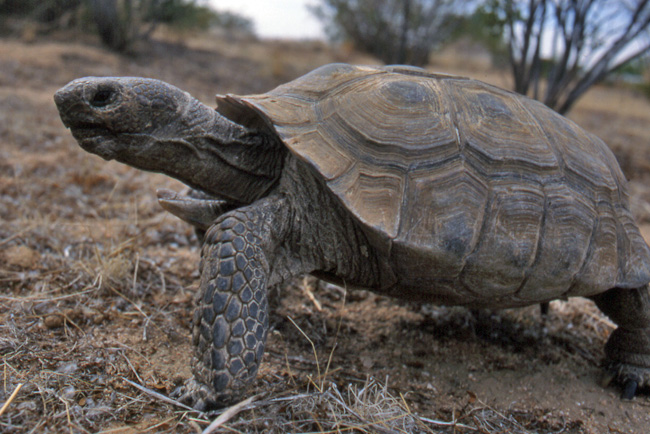
^Desert tortoise (Gopherus agassizii), a Federally Threatened denizen of the Mojave.
NextLight Renewable Power, LLC, has submitted two applications for rights-of-way for
the construction of two solar energy generation sites on Bureau of Land Management (BLM) desert. The two applications are identified as NVN– 085077 Silver State South Solar Project, and NVN–085801 Silver State North Solar Project. The proposed projects would consist of 7,840 acres of photovoltaic panels on public lands about 12 miles east of Primm, Clark County, Nevada.
In late July, 2009, we explored the site, on a huge fan on the east side of Ivanpah Valley, across a playa from the Ivanpah Electric Generating System solar thermal proposal in California. What we discovered was excellent Desert tortoise habitat, some of the best we have seen in the Mojave Desert, with active sign.

^Tortoise burrow in creosote-bursage habitat on the site.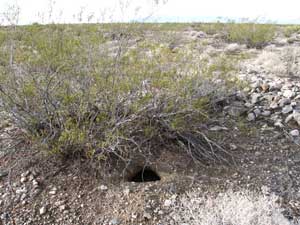
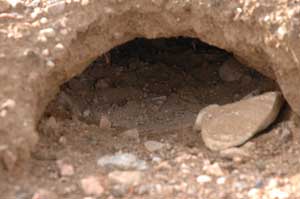
^Active tortoise burrow with tracks inside.
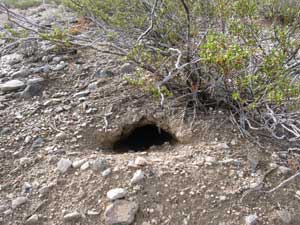
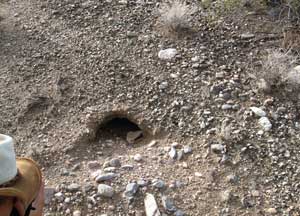
^Various tortoise burrows we encountered: in a 4 mile hike we saw tortoise 20 burrows, 40 pallets (resting areas where tortoise find shade), 3 old carcasses of tortoise bones, and a fresh scat.
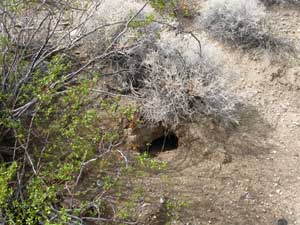
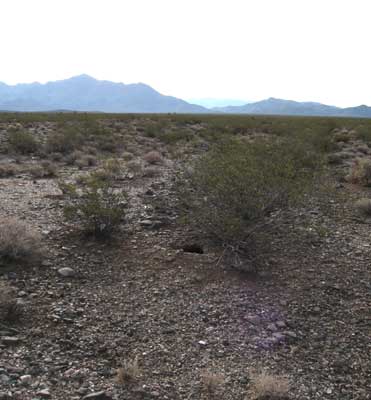

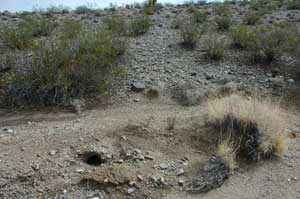
^More tortoise burrows on the eroded granitic fan, good digging habitat.

^A pallet under a creosote where tortoise stop to rest on their foraging rounds.
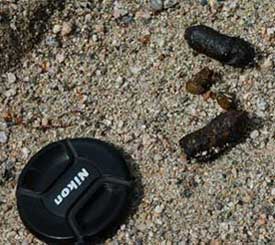
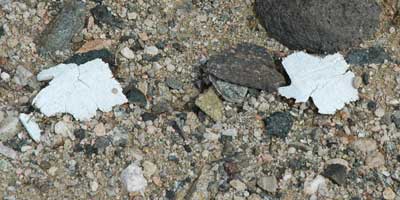
^(Left) Old bones of a tortoise shell. (Right) Fresh scat of a large tortoise.
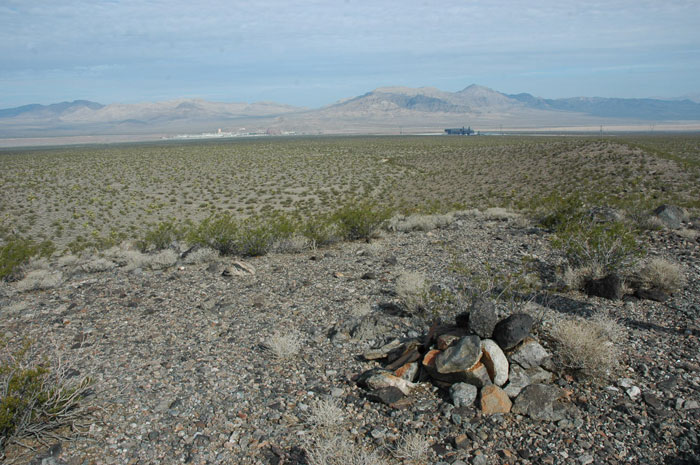
^Fan which will be scraped for a photovoltaic project. Bighorn natural gas plant is in the distance at right, and Primm, Nevada to the left.
The maximum nameplate capacity is stated as 400 megawatts (MW), which is not the same as the actual energy output the plant would produce. Note that the adjacent Reliant Energy's Bighorn combined cycle natural gas generating station has an installed capacity of 598 MW on 165 acres, a much smaller footprint. Photovoltaic energy typically have a capacity factor of only 20% as they do not produce at night and on cloudy days, while combined cycle natural gas plants run at about 60% capacity. The wastage of tortoise habitat land for the Next Light project is not justified.
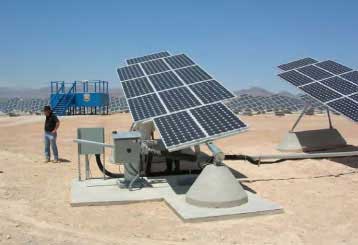
^Photovoltaic pedestals proposed for the project.
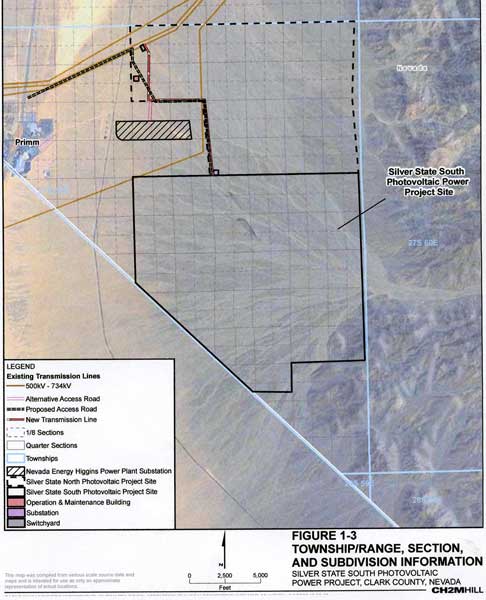
See the Next Light Silver State South Plan of Development at BLM's website: http://www.blm.gov/nv/st/en/fo/lvfo/blm_programs/energy/nextlight_renewable.html
See another map of the region >>here.

^Mojave yuccas by wash on the site.
See our coverage of the August 12, 2009 BLM scoping meeting in Primm, Nevada, and more site photos >>here.
A Letter of Concern We Sent
Roy C. Averill-Murray
Desert Tortoise Recovery Coordinator
U.S. Fish and Wildlife Service
Desert Tortoise Recovery Office
1340 Financial Blvd, #234
Reno, NV 89502
Ron Wenker
Nevada State Director
Bureau of Land Management
Nevada State Office
P.O. Box 12000 (1340 Financial Blvd.)
Reno, NV 89520-0006
Las Vegas Field Office
Bureau of Land Management
Attn: Gregory Helseth
4701 North Torrey Pines Drive
Las Vegas, NV 89130–2301
Ron Wenker, Nevada State BLM Director - Ron_Wenker@blm.gov
Gregory Helseth, BLM Las Vegas office - Nextlight_Primm_NV_SEP@blm.gov
Bob Williams, U.S. Fish and Wildlife Service - Bob_D_Williams@fws.gov
To Whom It May Concern,
We are very concerned with the Bureau of Land Management’s (BLM) plan to consider approval of the proposed NextLight Renewable Power, LLC, Silver State North Solar Project and Silver State South Solar Project, located near Primm, Nevada (Federal Register Notice LLNVS0100.L51010000.ER0000.LVRWF09F8770; NVN-085077 and NVN-085801; 09-08807; TAS: 14X5017)
Nextlight proposes to blade, level and clear 4,640 acres of some of the most high quality desert tortoise (Gopherus agassizii) habitat in the Mojave Desert.
The sign of tortoises is abundant on the proposal site: many active desert tortoise burrows, pallets, carcasses, tracks, and fresh scats. The amount of tortoise sign visible from just a reconnaissance walk is enough for us to raise serious concern about how this project could significantly impact an otherwise robust population.
The habitat is characterized by a large bajada draining the Lucy Grey Mountains to the east with an approximate elevation between 2,000 and 3,000 feet. The soil is eroded granite making a suitable substrate to support a robust population of desert tortoise and other fossorial fauna.
The plant community consists primarily of:
Creosote bush (Larrea tridentata)
Bursage (Ambrosia dumosa)
Rhatany (Krameria sp.)
Mojave yucca (Yucca schidigera)
Big galleta grass (Hilaria rigida)
Woolly plantain (Plantago ovata)
Silver cholla (Cylindropuntia echinocarpa)
Catclaw acacia (Acacia greggii)
The proposed project site is located within Northeastern Recovery Unit first outlined in the 1994 Desert Tortoise (Mojave Population) Recovery Plan. The site was also once in the proposal for the Piute-Eldorado Desert Wildlife Management Area (DWMA). The site appears to be in very good shape for recovery. There is very little sign of off highway vehicle use and minimal sign of invasive species. This site could qualify for a DWMA. The 1994 Recovery Plan states that “Large blocks of habitat, containing large populations of the target species, are superior to small blocks of habitat containing small populations.” Our observations of the site indicate that it would meet these criteria.
We are concerned with the recent push by the Department of the Interior to develop so much public lands for large scale renewable energy projects. The Nextlight South is only half of their proposed project. This combined with the many thousands of acres being pursued for development by several other companies could very well lead to the extinction of significant tortoise populations. Development of just one of these projects would be so large that it could cut off the connectivity that many wildlife species require to maintain their genetic diversity.
We do not believe that it is possible to mitigate the destruction that the development of this parcel of 4,640 acres of land would cause. Where would you possibly translocate all of those tortoises? How could you find a piece of suitable land with a carrying capacity large enough to accommodate all of these animals? We also do not believe it is possible to even find all the tortoises on the site. It is very large and the topography is very complex. Desert tortoise translocation was never intended to be used as a replacement for habitat. It was intended to mitigate smaller development projects. Cumulative impacts from the many other proposed large energy projects should also be taken into consideration. If this project and projects like it are approved in the future in high quality desert tortoise habitat, we believe the desert tortoise will end up being upgraded from Threatened to Endangered.
We would like to suggest that this site be removed from consideration for large scale energy developments. We feel the Bureau of Land Management should be looking for alternatives in brown fields near urban developments and should be advocating photovoltaic systems on roof tops over the destruction of so much biological diversity on such large tracts of land. We would also like to suggest that the area slated for the Nextlight development be considered for conservation status such as an Area of Critical Environmental Concern. We also feel a very extensive survey of the site is in order and believe it should be evaluated by biologists other than those who have been hired by Nextlight.
Thank you for considering our comments.
Sincerely,
Basin and Range Watch
Send a letter with your own comments to save this giant chunk of desert from development.
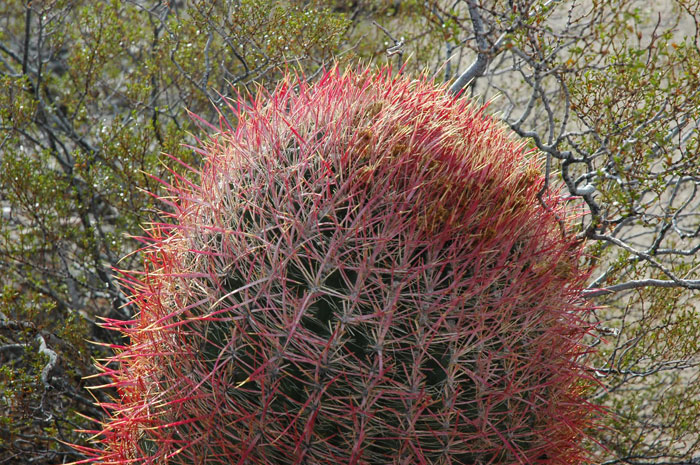
^Barrel cactus (Ferocactus cylindraceus).
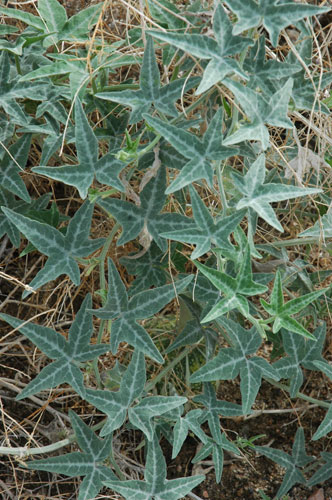
^Coyote melon (Cucurbita palmata) vines in a wash.
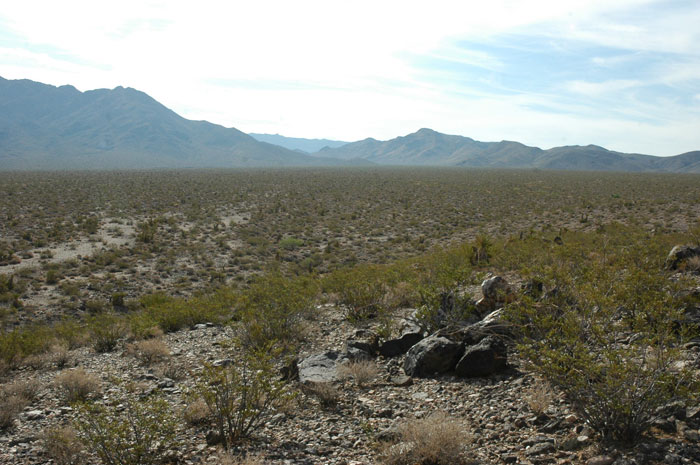
^View looking east from a hill in the middle of the site. The boundary of the proposal reaches the top of the fan at the mouth of the distant canyon. All this is excellent tortoise habitat.
HOME..........NextLight Scoping Meeting August 2009.....Map
Ivanpah Solar Power Tower Project..........Last Spring in Ivanpah?
